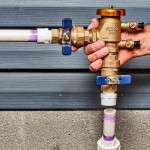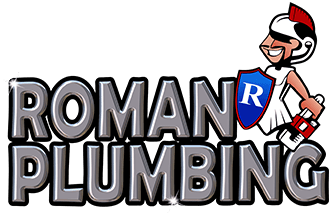What Is Backflow?
Backflow is the movement of water flow from its intended direction in the reverse direction. Generally, this is caused by a discrepancy in pressure, and it can cause a health hazard. However, backflow preventers are safeguards in place to prevent backflow from occurring, but backflow testing must be done regularly to ensure the proper operation of backflow prevention devices. This blog post will share the dangers of backflow, what backflow testing is, and its importance.
The Dangers of Backflow
 When backflow prevention devices fail, water can flow in the wrong direction and pick up harmful contaminants along the way, making backflow a major public health concern. Chemicals and sewage may enter the freshwater supply, increasing the risk of waterborne illnesses and cross-contamination. Backflow can also damage the plumbing.
When backflow prevention devices fail, water can flow in the wrong direction and pick up harmful contaminants along the way, making backflow a major public health concern. Chemicals and sewage may enter the freshwater supply, increasing the risk of waterborne illnesses and cross-contamination. Backflow can also damage the plumbing.
Backflow generally occurs for one of two reasons, including:
- Back siphonage: This can cause backflow when there is a loss of pressure in the water supply, causing water to change direction back into the water supply. This can occur due to situations like a water main break or a fire hydrant being opened.
- Back pressure: This can cause backflow when the water supply is connected to a fixture or device that creates pressure greater than the supply. This can occur due to water heaters heating up, leaking pipes, or a water main break.
What Is a Backflow Test?
 Backflow testing, quite simply, ensures that the water is flowing in the intended direction and that backflow prevention devices are working correctly to continue preventing backflow. These tests should typically be done annually or once every two years to protect the individual system as well as the public water supply. By monitoring system pressure, testing for leaks, and inspecting the backflow preventers, a certified backflow tester can assess whether backflow is occurring or can be avoided.
Backflow testing, quite simply, ensures that the water is flowing in the intended direction and that backflow prevention devices are working correctly to continue preventing backflow. These tests should typically be done annually or once every two years to protect the individual system as well as the public water supply. By monitoring system pressure, testing for leaks, and inspecting the backflow preventers, a certified backflow tester can assess whether backflow is occurring or can be avoided.
In some cases, the first line of defense against backflow, the backflow prevention devices, may malfunction. If so, they will need to be repaired or replaced. Different types of backflow prevention devices are used for different parts of systems, such as check valves, double check valves, and more. Air gaps are also considered backflow preventers, but they are gaps in the system that prevent backflow rather than a device. A certified plumber can help home and business owners prevent backflow with routine backflow testing and repair.
Why Does Backflow Testing Matter?
Backflow can compromise water purity and add harmful contaminants to the clean water supply, so regular backflow testing is essential to prevent water contamination, prevent the spread of illness and disease, and protect public health. Backflow preventers can fail, so backflow testing is an essential step in maintaining a safe, clean water supply.
Backflow testing by a certified backflow tester is also typically required either once every year or once every two years, depending on the state and local requirements, to protect the clean water supply from water contamination and protect public health. Many illnesses and diseases have been linked to historical instances of backflow, highlighting the importance of proper installation, maintenance, and testing of backflow prevention measures.
About Roman Plumbing and Air Inc
Roman Plumbing and Air Inc. has over 20 years of experience serving the New Port Richey area. They offer upfront pricing, prompt service, and fast turnarounds. Call them for backflow testing and certification services in New Port Richey, FL.



